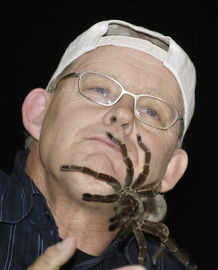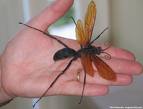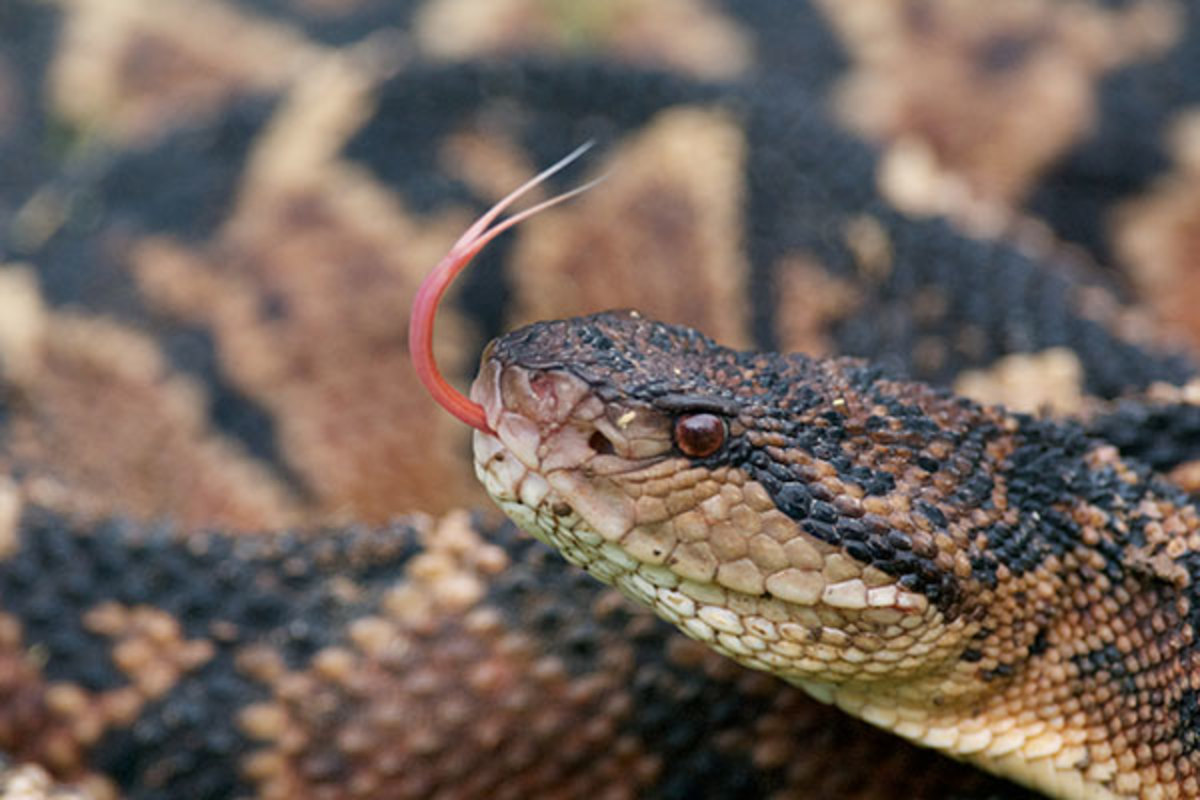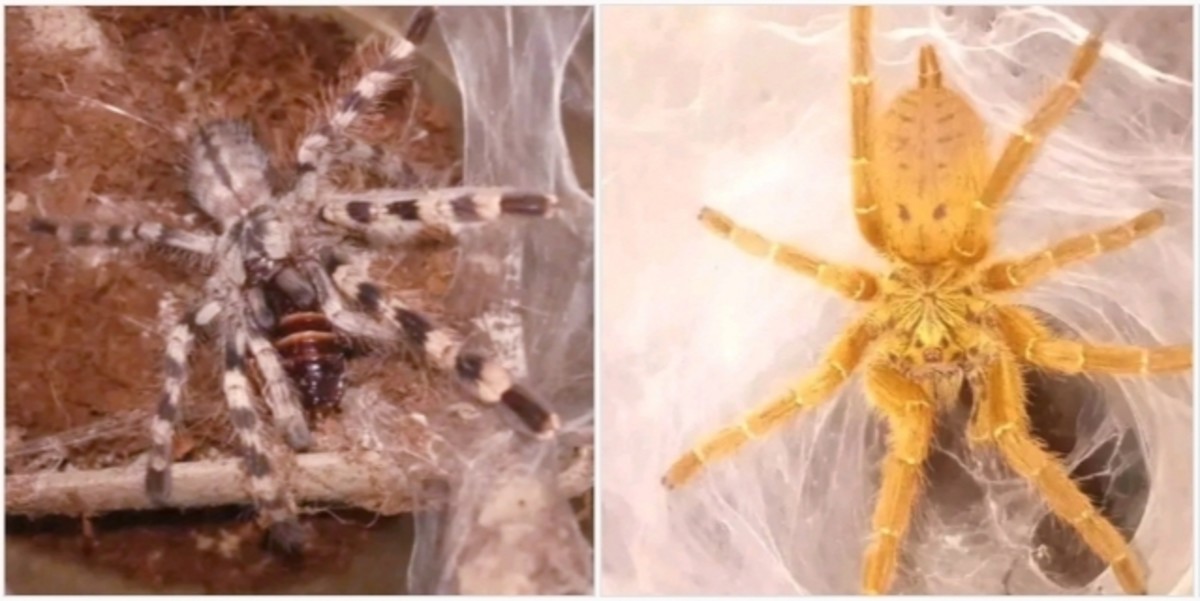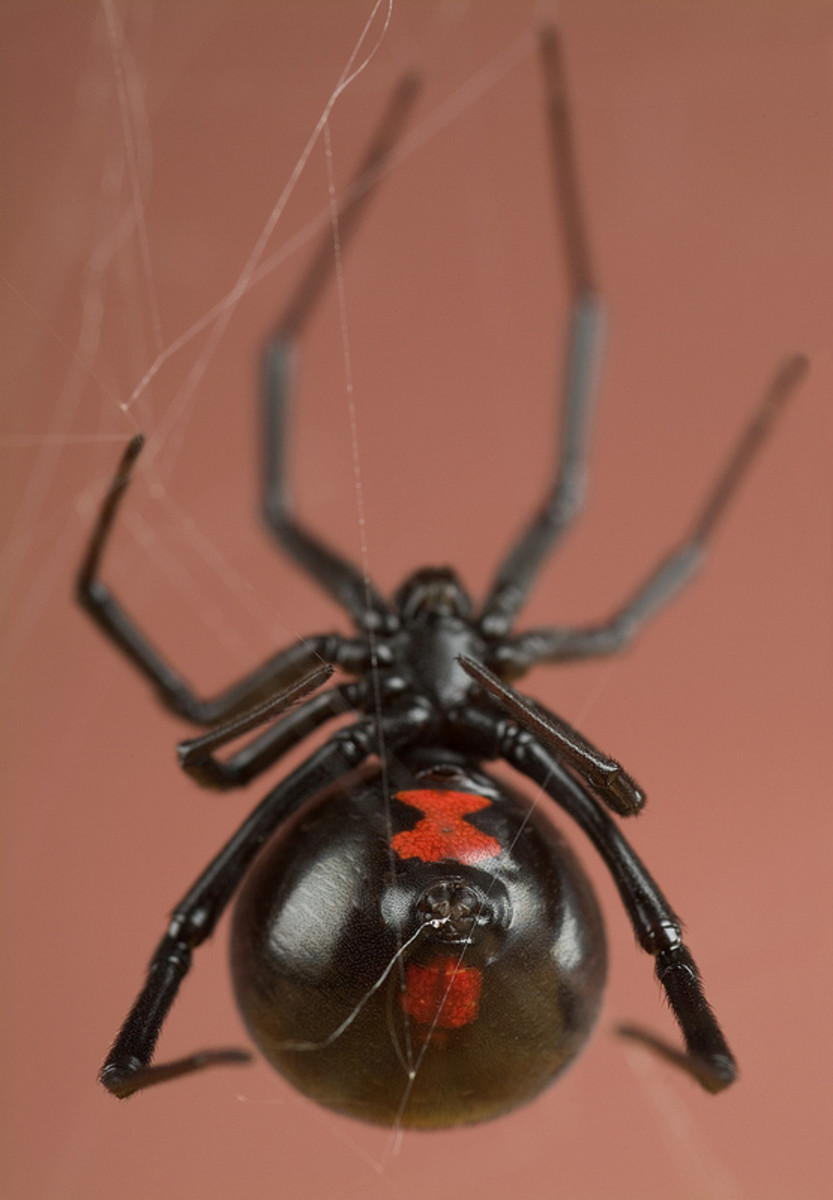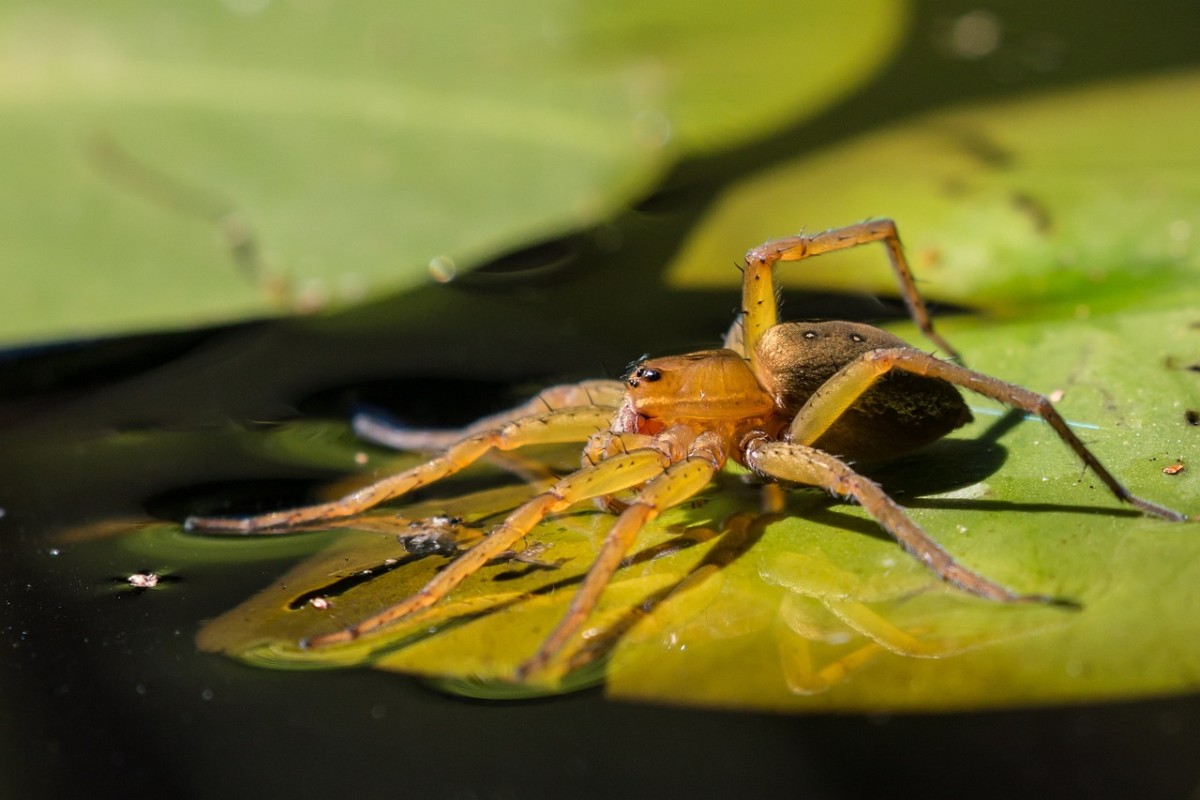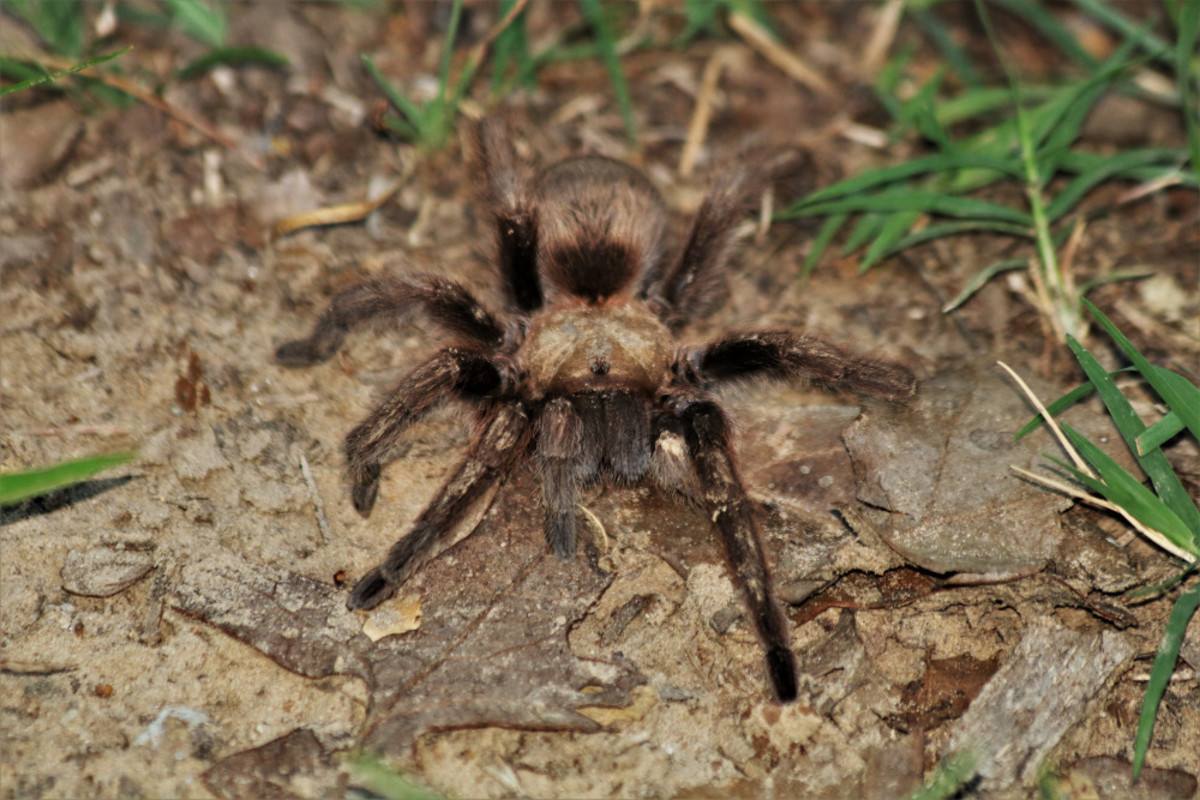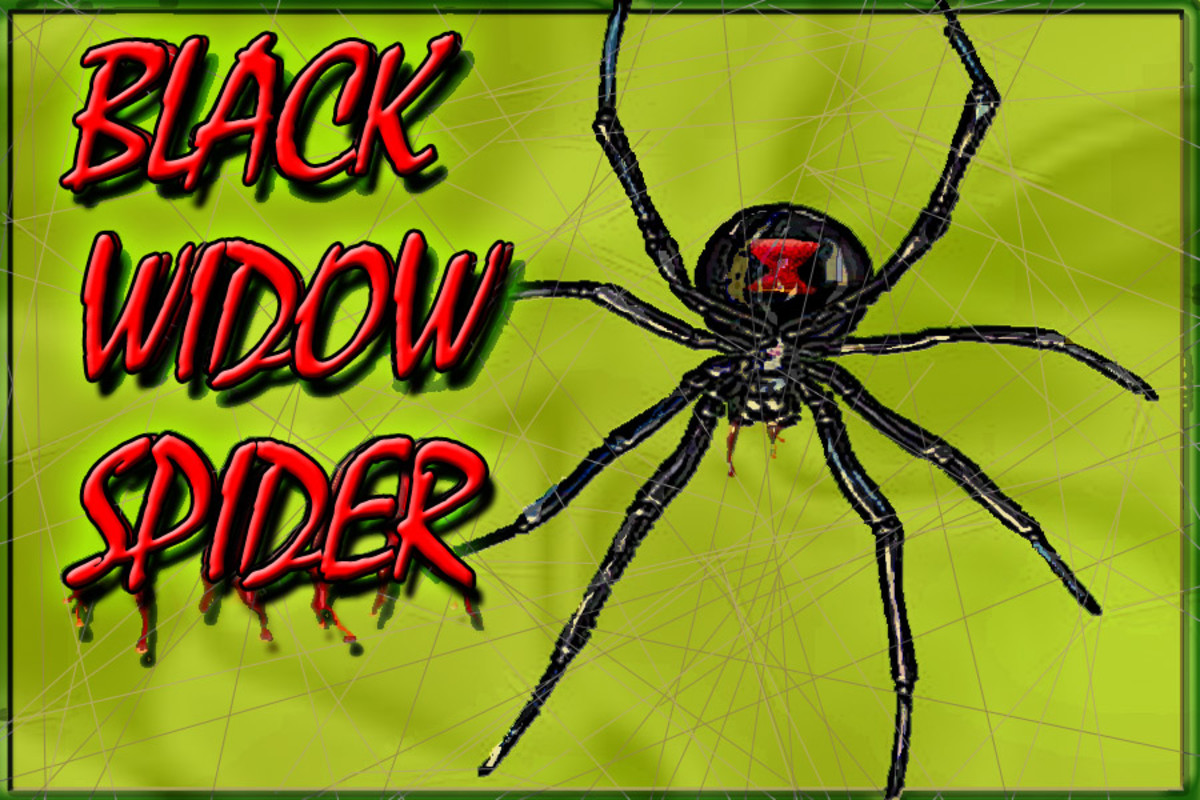- HubPages»
- Education and Science»
- Life Sciences»
- Entomology»
- Spiders & Arachnids
TARANTULAS
Tarantulas can grow on you, but hide the canary.
Click thumbnail to view full-size





Much Maligned, Tarantulas are Relatively Harmless
Family Theraphosidae
And the Lycosa Tarantula, progenitor of the Tarantella Dance.
Belt Buckles; key fobs, arachnid abuse.
Another creature suffering from the image of giant, man-eating arachnids foisted on us by Hollywood, like the sharks, wolf and more. Tarantulas are, in the main, pretty harmless to man, especially those content to observe the giant spiders without feeling the need to harass them, such as poking them with a stick or throwing stones at them. They can, as can all arachnids, bite and inject venom, which they do to stun prey. In all cases, the tarantula venom is much weaker than that of the dangerous spiders, such as the Black Widow, etc., etc. But you still wouldn’t enjoy being bitten by one as the fangs are large and powerful and they can spice the defence up a bit by filling the air with minute hairs which have the potential to cause severe eye pain and even blindness. The tarantulas from the so called, New World (USA, Central and South America), are those capable of rubbing or kicking-off “urticating hairs” from their body. These tiny, barbed hairs should not be inhaled and kept out of the eyes; they may be fatal to small mammals. As “Old World” tarantulas do not have these hairs, they may be more likely to bite as a first form of defence, and their venom is somewhat stronger than their new world counterparts. In both species, a common form of defence is to rear-up and display fangs, sometimes hissing (Piiiissssss offfff!). They may often just turn and run, but spin around and attack if they are pursued or their escape route is blocked. (A little known fact is they can also jump; one leaped onto my foot in Baja Mexico: I am sorry to confess it was able afterwards to tell its mates it knew how to fly!). If they are treated gently and their space is not violated in a rough manner, they may calm down and can even be picked up in the wild. I have found, like so many wild creatures such as snakes, they understand when they are not threatened very quickly and respond in kind.
Some of the bad press tarantulas have engendered has been caused by the fact they were confused with other, large spiders, such as the Brazilian Wandering Spider, or the Sydney Funnel Web. As these two especially are highly venomous and aggressive, picking one up and chucking it under the chin might end in tragedy; their venom is many times more lethal than any tarantula. In fact, tarantulas have become popular pets, a fact I find very wrong. These creatures should be enjoyed when encountered in the wild, not stuck in a small tank to end their days in lonely depression. Much as we say they “get to know and love us,” this is just not true of lower life forms who have no centres in their brains to allow for complicated thought processes towards other beings. We represent food; they get used to us and the fact we are not a threat to them, but they should be with their own species. I have a lot of problems with the “Exotic Pet Trade” which is not supervised half enough and has cost lives supplying dangerous pets such as scorpions and snakes.
There are more than 900 known species of tarantula, also including the sub-group, Diplunidae, or Funnel-Web Tarantulas. Some live in trees, constructing a sort of silk cocoon to live it; others live primarily on the ground, occupying tunnels, also lined with fine silk (bless them, eh!?). They are known as ambush predators, like many other spiders and scorpions. The larger ones predate on lizards, mice and birds: the largest of all, the Goliath Bird-Eating-Tarantula is an avian specialist and can weigh up to 6 ounces with a leg span of 12 inches! No surprise, he lives in the Brazilian and Venezuelan rain-forests and there are another four species nearly as large. They wouldn’t have to throw hairs at me, I’d be running through the jungle gibbering in fright! (Just kidding, I’d be chucking ‘em under the chin!).
If you can get past the idea of menace, tarantulas are handsome critters indeed. They come in many sizes and colours; the North American ones are mainly brown and medium size. They are also found in black, black and white, blue, orange and black and more.
They have their own enemies, too, like the “Pompilidae” or “Tarantula Hawk” which is well known in the States and elsewhere for stinging, paralysing the tarantula and using it as a comatose repository for their larvae. Darwin used this fact to bitterly conclude there could be no Supreme Being.
They have taken their compelling name from a Wolf Spider found in Italy and they have many other names throughout the world, such as baboon spider in Africa, earth-tiger in Asia (like that), barking spider in Australia, (where they’re all barking mad and full of Foster’s…the Aussies, not the arachnids). A common name in many other areas is “Mygales.”
Too little is really know about tarantulas; hundreds of species have not been studied at all since they were first recorded. We have no idea how many species are becoming extinct due to the destruction of the rain forests everywhere. There are certainly hundreds more never yet recorded and which may never be, as our natural resources dwindle unchecked. Perhaps someone should open a “Tarantula Park” just to conserve a few pairs of each species until man comes to his senses or buggers off. The same case can be made for thousands of wild species endangered by our mindless proliferation and abuse of our weary world.
Arachnid Abuse With the above in mind, please object when you see plastic key fobs and belt-buckles etc., decorated by embedding real tarantulas, spiders and scorpions inside. This has become a scourge of arachnids all over the world and should be made illegal everywhere. They are repulsive and mindless objects and should never be purchased.
The Tarantella.
First came the spider found near Taranto, Italy, the Lycosa Tarantula. Mildly venomous, the spider was greatly feared in the area, more, I believe, because it was a Wolf Spider, which means it could run very fast on gangly legs and jump around. It’s bite was hardly as bad as a bee sting. (Poor bees, lucky they can’t read and get a complex, all mild arachnid bites are compared to their stings!). People getting bitten by one of these spiders were thought to have caught an ailment, Tarantism, and the dance, The Tarantella, was invented to drive the venom and disease from the person’s body. One and all probably got so pissed on the local hooch, high-blood-pressure pumped the weak venom out and honour was satisfied for the local quack. In reality, there is no evidence of Lycosa bites in modern times, the spider being very shy and elusive and living in a silken burrow..

